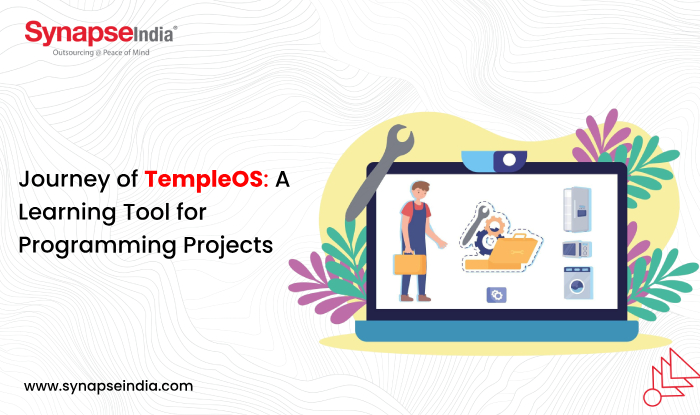 28 Aug 2014
28 Aug 2014
Under usual conditions, programmers these days are not much bothered about building a complete operating system from start. It indicates that most programmers are quite capable of building an OS, provided they get ample time to do so. Linus Torvalds wrote the Linux Kernel as a hobby over the time period of several months in the year 1991.
Another similar creation relates with the development of the new & stable OS known as TempleOS. The journey of TempleOS got the start in the year 1993 as a programmer's hobby. After going through brief development periods while also being shelved at times, the project evolved to produce TempleOS as the final outcome.
TempleOS is a multi-tasking, public domain, multi-cored, open source, ring-0-only, non-networked, single-address-map, PC operating system meant basically for recreational programming purposes.
It ships with the modified version of C++ known as "HolyC," file system "Red Sea," and FAT32 support. It has 8-bit ASCII support besides a 2D & 3D graphics library, all of running at 640x480 (VGA) with 16 superb colors, while all outputs sound via one-voice PC speaker. Moreover, its also possible to compile one's own distribution inside the TempleOS.
Currently, all of that as well as extensive documentation & demos happen in 121,691 code lines; demos using 22,242 lines while music organ composing software examples is 4,292 lines. The stable TempleOS fits easily in less than 100,000 lines. Also, taking into account the TempleOS size and VGA graphics limitations, it can be said that the demos are impressive.
TempleOS is actually for hobbyist programmers that are on single user home computers, rather than mainframes or servers. But it is indeed preemptive multitasking. How does it bother running two apps simultaneously twice as quick when you actually want to run only one faster ? It can be thus said that TempleOS also does master/slave multiprocessing. The multicore's expected use is primarily to put graphics on the screen. As Hardware graphics acceleration is not made use of, hence this is possible.
One of the biggest reasons behind creating this OS was to empower programmers with a brilliant learning tool. Living up to that purpose, TempleOS has proved its worth as an educational tool for the purpose of programming experiments. Its quite easy to understand, manipulate as well as work with. However, an end user will find it quite complex to draw a line onscreen in TempleOS as well as Commodore 64.
Hence, it would not be wrong to say that TempleOS has actually come as a useful solution for all programmers, hardware designers and educators who are currently under the stress of facing the complexity of programming modern computers. Almost every programmer, software developer in India and abroad will find it as a decent helping hand when it comes to programming experiments.

 15 Jan 2024
15 Jan 2024
